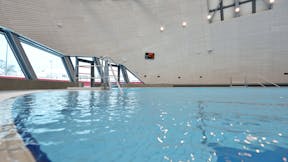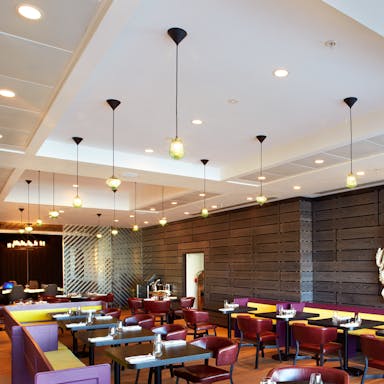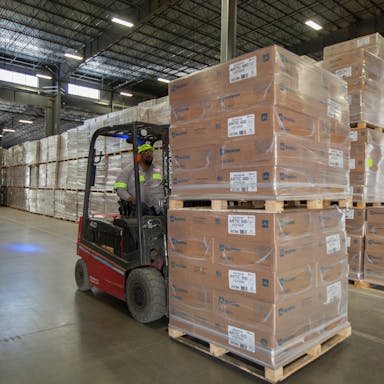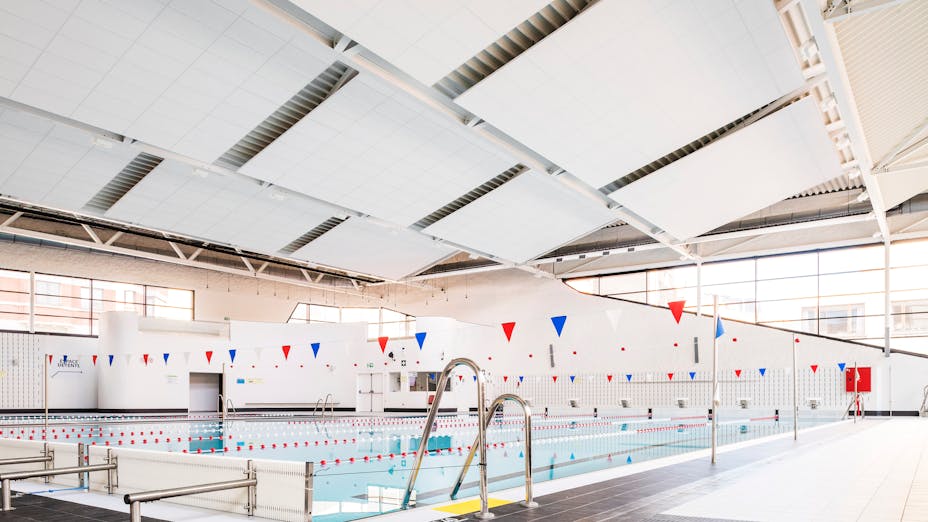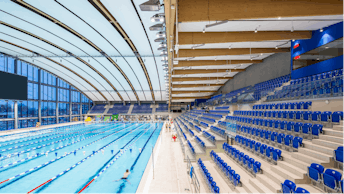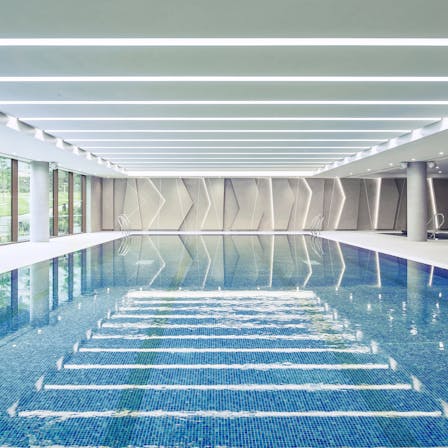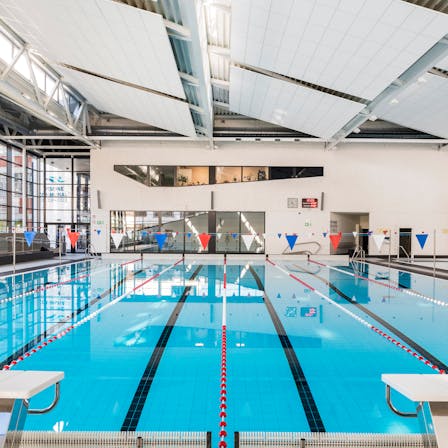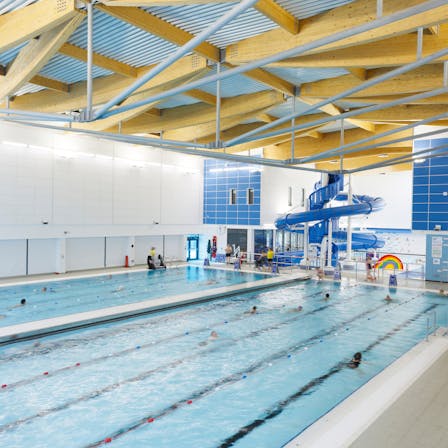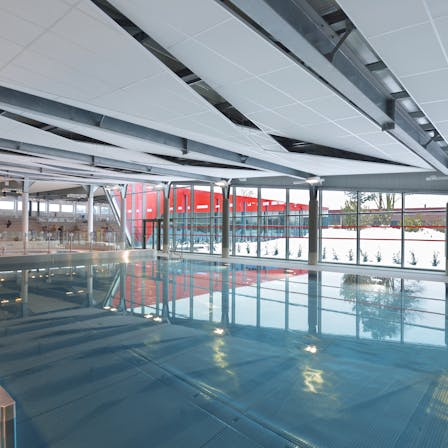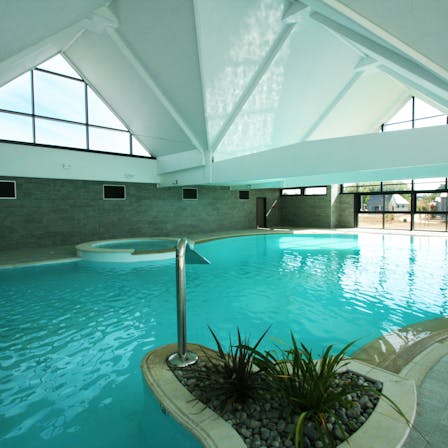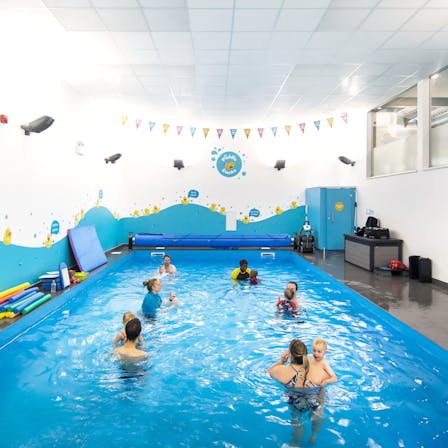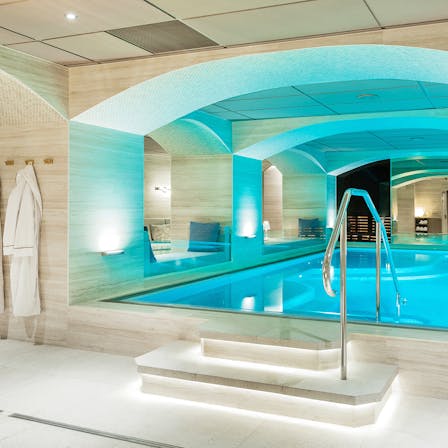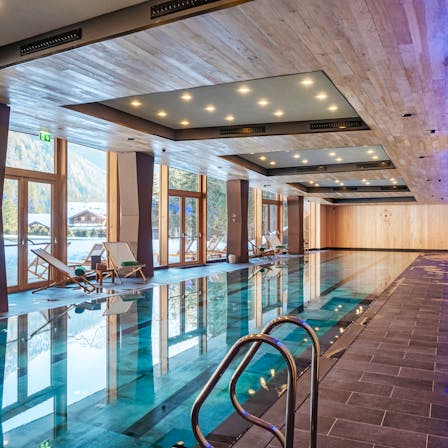Selecting Swimming Pool Acoustic Solutions
The acoustic solutions used at swimming pool facilities should be able to resist any potential issues that might arise at one point during their lifecycles.
Humidity, for one, is notorious for the damage that it causes to materials. While moisture cannot be completely omitted in pool facilities, the damage it causes can be minimised with strategic material selection.
Here are crucial factors to consider when selecting swimming pool acoustic solutions:
- Hygiene: The acoustic solutions selected for swimming pool facilities shouldn’t provide sustenance to any harmful micro-organisms like Methicillin-resistant Staphylococcus aureus (MRSA).
- Sagging: Humidity can weaken the structure of certain ceiling materials and cause them to sag. And in extreme cases, they might even fall out of the grid. Ceilings must remain unaffected by contact with water or high humidity and temperature. Hydrophobic materials such as stone wool repel water and don’t hold water.
- Corrosion: This reaction occurs when materials react with moisture. For metals, the reddish-brown aesthetic result is referred to as rust. Corrosion can be minimised by installing suspended ceilings that have enhanced corrosion resistant (ECR) grids. Mounting solutions should likewise be resistant.
- Mould: Mould originates from fungus that reproduces through spores, which float through the air to find fertile ground to grow in damp, organic surfaces. Installed materials should not have any nutritional value that sustains them.
- Impact resistance: Acoustic solutions in areas that host sports activities and ball play need to be able to withstand tougher-than-average wear and tear – as well as frequent demounting.
- Chemical resistance: The acoustic solutions should be resistant to chlorine as well as harsh disinfecting cleaning products that have ammonia and hydrogen peroxide.
- Light reflection: Depending on the desired mood of the swimming pool, it might be an advantage to select an acoustic solution that increases light diffusion by reflecting natural light.
In Europe, the standard EN 13964:2014 ensures that suspended ceilings comply with many of the above factors.
For the best long-term performance, it’s highly recommended that a warm roof construction is specified in conjunction with acoustic solutions. Condensation risk analysis is additionally essential.
Examples of Swimming Pools with Optimised Acoustics
From lap pools to swim spas, explore facilities that optimised their acoustic comfort, speech clarity, and speech intelligibility by installing Rockfon acoustic ceiling solutions.
